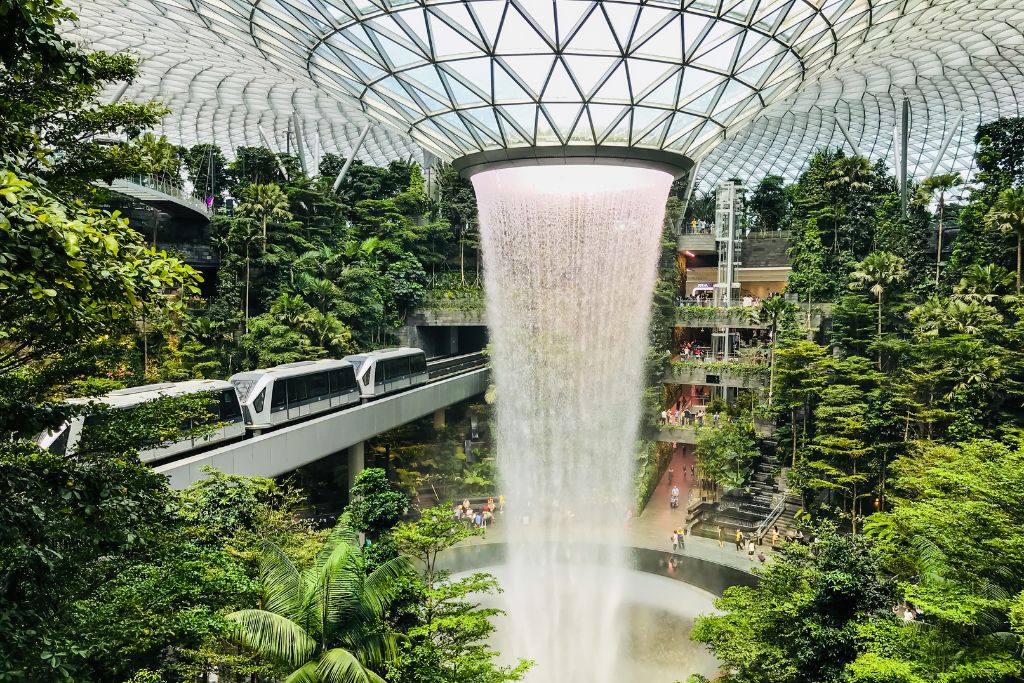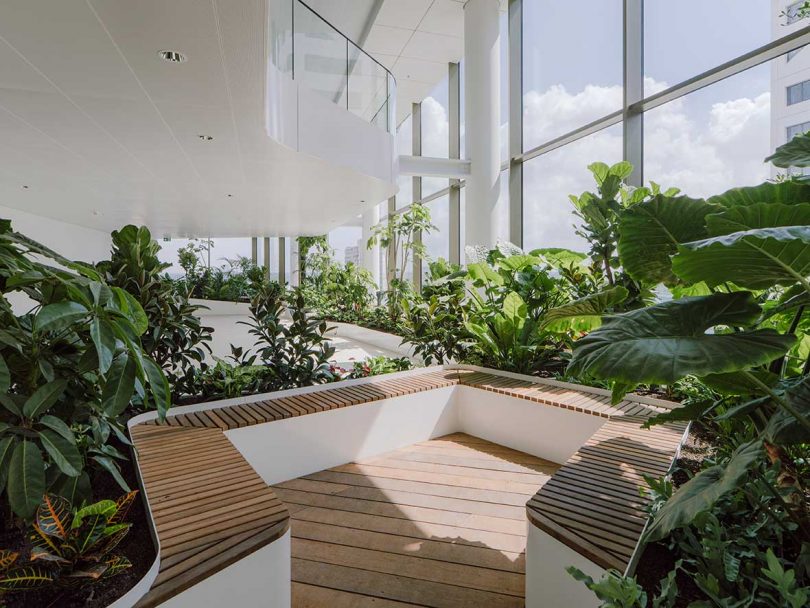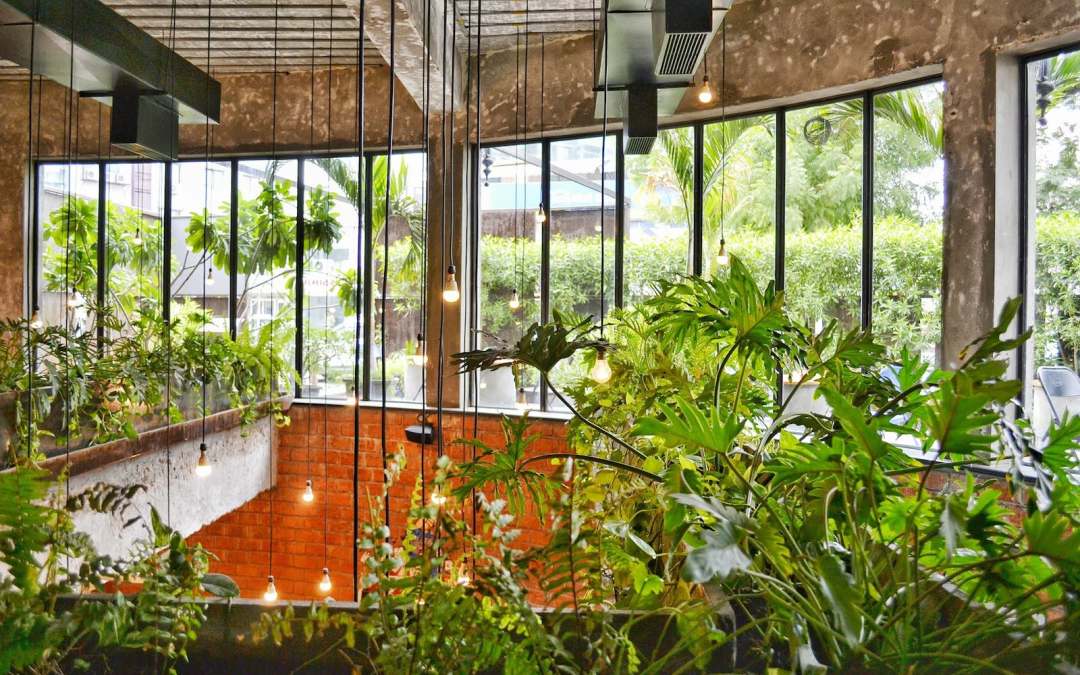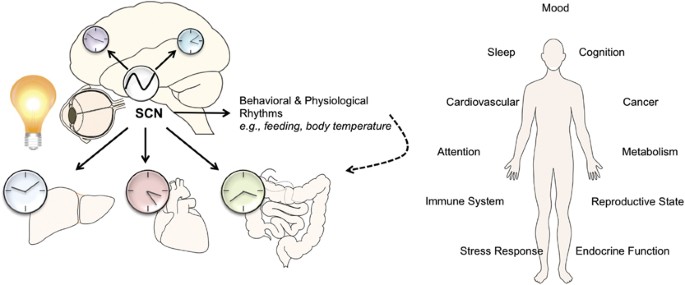Exploring About Active Design and Biophilia
Biophilic design represents an approach that fosters a connection between children and the natural environment, thereby enhancing their overall well-being and development.
This concept examines how the integration of elements such as natural light, greenery, and organic materials within educational settings can significantly promote cognitive, emotional, and physical growth in children.
Furthermore, it outlines practical strategies for implementing biophilic design in schools and childcare centers, while also addressing potential challenges that may arise.
This design philosophy serves to create nurturing environments that facilitate the flourishing of young minds.
What Is Biophilic Design?
Biophilic design represents an innovative approach that incorporates natural elements into the built environment, thereby fostering a deeper connection between individuals and nature. This design philosophy is founded on the principles of environmental psychology, highlighting how thoughtfully designed spaces can enhance cognitive and emotional well-being through the integration of natural light, greenery, and views of nature.
The objective is to create environments that are conducive to children’s well-being, prioritizing not only aesthetic appeal but also promoting ecological awareness and nurturing the relationship between humans and nature.
By seamlessly blending indoor and outdoor experiences, biophilic design contributes to the development of healthier, more restorative environments that enable individuals to thrive.
How Does Biophilic Design Affect Childhood Development?
Biophilic design plays a significant role in childhood development by enhancing learning environments and promoting holistic growth through nature-based play and sensory-rich experiences.
Research in childhood psychology indicates that exposure to natural elements contributes positively to cognitive development, emotional resilience, and social interactions among children.
Environments that incorporate biophilic elements stimulate creativity and provide essential opportunities for imaginative play, which are vital for the development of social-emotional skills and spatial awareness.
By designing spaces that encourage exploration and immersion in nature, we can cultivate a profound connection to the environment and nurture a generation of ecologically conscious individuals.
1. Improves Cognitive Development
Biophilic design plays a pivotal role in enhancing cognitive development by integrating elements that mitigate cognitive load and promote attention restoration in children. Research indicates that environments enriched with natural features can significantly impact learning outcomes and academic performance by providing sensory stimulation that actively engages young minds.
By facilitating interactions with their surroundings through exposure to nature, these educational spaces foster critical thinking and creativity, thereby establishing a solid foundation for lifelong learning.
For example, a study conducted by the University of Queensland revealed that classrooms with increased natural light and access to outdoor spaces resulted in a 15% improvement in student attendance and a 20% enhancement in overall engagement. Additionally, sensory gardens, featuring vibrant plants and diverse textures, have been shown to lower anxiety levels in students, thereby creating a tranquil atmosphere conducive to concentration.
Evidence suggests that when children are educated in biophilic environments, they not only achieve better academic results but also demonstrate improved problem-solving abilities, enabling them to apply their knowledge more effectively in real-world situations.
2. Enhances Emotional Development
The incorporation of biophilic design into learning environments significantly enhances emotional development by promoting emotional well-being and resilience in children. Natural elements, such as greenery, water features, and open spaces, play a crucial role in stress reduction, creating nurturing environments that support the development of emotional intelligence.
By enabling children to engage with their surroundings in meaningful ways, biophilic design fosters their capacity for self-regulation of emotions and the cultivation of strong social bonds with peers.
Integrating features such as living walls, natural light, and sensory pathways encourages exploration and creativity, both of which are essential for emotional growth. These strategies contribute to the formation of inclusive spaces that accommodate diverse learning needs and promote a sense of belonging.
For example, educational institutions that incorporate gardens and outdoor classrooms allow students to engage directly with nature, thereby enhancing mindfulness and emotional presence.
Successful initiatives in educational settings, such as those implemented in forest schools, demonstrate how exposure to natural environments fosters deeper emotional connections, ultimately facilitating holistic development in students.
3. Promotes Physical Development
Biophilic design fosters physical development by facilitating outdoor learning and active play within child-centric environments. Access to green spaces and play areas abundant in natural elements encourages children to participate in physical activities, which are vital for their healthy growth and development.
Research indicates that engaging with nature not only enhances physical fitness but also fosters an appreciation for the environment, thereby improving children’s ecological literacy and social interactions.
Studies have demonstrated that children who spend time in outdoor classrooms exhibit significantly higher levels of physical activity, contributing to reductions in obesity rates. For example, a 2018 study published in the journal “Children, Youth and Environments” revealed that children attending schools with integrated nature-based learning programs were 40% more likely to engage in moderate to vigorous physical activity.
Furthermore, sensory pathways designed with tactile and visual stimuli not only enhance motor skills but also promote sensory development. This approach creates a holistic educational framework that integrates learning with wellness, ultimately fostering the well-being of children.
What Are the Key Elements of Biophilic Design?
Key elements of biophilic design encompass the strategic utilization of natural light, natural materials, views of nature, and the incorporation of indoor plants to cultivate inviting and restorative environments.
These elements are vital in fostering a connection to nature, which is a fundamental aspect of biophilia. By prioritizing design aesthetics that enhance sensory experiences, these environments can significantly improve emotional well-being and cognitive development, thereby providing conducive spaces for childhood education and growth.
1. Natural Light
Natural light is a fundamental component of biophilic design that significantly influences cognitive development and emotional well-being in children. Research indicates that exposure to sunlight enhances mood, improves focus, and facilitates better learning outcomes, establishing it as a vital element of effective educational environments.
Incorporating natural light into design spaces fosters an inviting atmosphere that promotes creativity and curiosity among young learners. Architectural strategies such as large, strategically positioned windows, skylights, and light wells can optimize daylight utilization, allowing sunlight to penetrate classrooms more effectively.
These design choices not only illuminate learning environments but also provide visual connections to the outdoors, contributing to a sense of well-being and a reduction in stress. For example, classrooms that benefit from ample daylight can stimulate engagement during lessons, transforming the educational experience into a dynamic and enjoyable process for students.
2. Natural Materials
The use of natural materials in biophilic design adheres to design principles that promote environmental sustainability while also aligning with aesthetic preferences conducive to child-friendly environments. Materials such as wood, stone, and plant-based textiles not only create visually appealing spaces but also foster a connection to nature.
These elements significantly enhance the sensory experience within learning environments, encouraging children to engage with their surroundings through touch, sight, and sound. When children interact with natural textures and colors, they develop a deeper awareness of their environment, which can nurture their emotional connections to the natural world.
Incorporating such materials underscores the importance of sustainability, demonstrating how informed design choices can have a positive impact on the planet. As young learners establish these connections, they are more likely to embrace these values into adulthood, contributing to a stronger commitment to environmental stewardship.
3. Views of Nature
Incorporating views of nature within educational settings is a fundamental strategy in biophilic design that plays a significant role in creating restorative environments for children. Such views have been associated with enhanced emotional connections, improved concentration, and increased childhood wellness, thereby rendering them essential for effective learning.
Research indicates that when children can observe greenery, they experience lower levels of stress and anxiety, which fosters a more conducive learning environment. Studies demonstrate that classrooms featuring natural views can substantially enhance attention spans and improve cognitive functions, as the calming effects of nature benefit mental processes.
Furthermore, children are more likely to achieve better academic performance when exposed to natural light and outdoor vistas, which are correlated with elevated mood and motivation. This relationship between environmental stimuli and psychological well-being highlights the necessity of integrating these elements into educational environments to promote not only academic success but also overall well-being.
4. Indoor Plants
Indoor plants represent a crucial element of biophilic design, contributing significantly to health benefits and sensory stimulation within educational environments. They not only enhance the aesthetic appeal of spaces but also improve air quality and foster a calming atmosphere that supports emotional well-being.
The incorporation of greenery into classrooms can markedly improve children’s cognitive development and engagement. Research indicates that exposure to plants can enhance concentration and alleviate stress levels, which in turn leads to improved academic performance.
Moreover, the act of nurturing plants can cultivate a sense of responsibility and empathy among young learners. These living organisms engage multiple senses; the texture of leaves, the fragrance of flowers, and the vibrant colors serve to stimulate curiosity and creativity.
This multifaceted interaction fosters strong emotional connections, promotes resilience, and cultivates a deeper appreciation for nature. Ultimately, this approach nurtures well-rounded individuals who excel both academically and personally.
How Can Biophilic Design Be Incorporated into Schools and Childcare Centers?
Incorporating biophilic design into educational institutions such as schools and childcare centers is essential for fostering environments that support holistic development through outdoor learning and nature-inspired classrooms. These environments not only strengthen children’s connection to nature but also promote physical activity, emotional resilience, and cognitive growth.
By integrating green playgrounds and sensory pathways, educators can create engaging spaces that prioritize the wellness and health benefits of children.
1. Outdoor Learning Spaces
Outdoor learning spaces represent a vital aspect of biophilic design that promotes experiential learning and nature-based play, providing children with opportunities for physical activity and community engagement. These environments facilitate exploration and risk-taking, enabling children to immerse themselves in their natural surroundings while fostering an appreciation for ecological literacy.
Such spaces function not merely as classrooms but as dynamic ecosystems where young learners can engage in creative problem-solving and collaborative projects. By incorporating elements such as gardens, climbing structures, and interactive water features, these areas encourage an active lifestyle and address the increasing sedentary behaviors observed among children.
Moreover, outdoor learning environments promote social interactions, enhancing teamwork and communication skills as students learn to navigate challenges collaboratively. Ultimately, these thoughtfully designed spaces contribute not only to physical fitness but also to emotional well-being by cultivating connections among peers and fostering a deeper relationship with the environment.
2. Nature-Inspired Classrooms
Nature-inspired classrooms exemplify the principles of biophilic architecture, establishing environments that prioritize thoughtful spatial design and emotional well-being. These classrooms integrate natural elements, views of nature, and calming color palettes, fostering an atmosphere conducive to effective learning.
By adopting these design principles, educators can enhance learning outcomes and increase student engagement.
Beyond the physical structure, the strategic incorporation of natural materials—such as wood, stone, and plants—effectively integrates the outdoors into daily experiences. Large windows facilitate the influx of natural light, thereby diminishing reliance on artificial lighting while simultaneously enhancing mood and focus.
Research indicates that when children have views of greenery or floral landscapes, it can lead to reduced stress levels and increased creativity.
These elements operate in harmony to cultivate emotional intelligence, equipping children with essential skills for interpersonal relationships, while also promoting academic success through improved concentration and reduced anxiety.
3. Green Playgrounds
Green playgrounds provide children with the opportunity to engage in nature play within a safe and stimulating environment, fostering imaginative experiences and promoting various health benefits.
These spaces can be thoughtfully designed with natural elements such as trees, water features, and sensory pathways, which encourage exploration and creative thinking while allowing for risk assessment in a controlled setting.
The intentional integration of these features not only captures children’s attention but also facilitates significant social interactions among peers as they collaborate in open-ended play.
Natural playgrounds serve as an ideal backdrop for active learning, where children can participate in imaginative scenarios, problem-solving activities, and cooperative games.
Ensuring safety through strategically placed equipment and soft, natural surfaces is essential, as it enables both caregivers and children to fully enjoy the play experience with confidence.
Ultimately, these designs contribute to holistic development by enhancing physical fitness, improving cognitive skills, and nurturing emotional well-being.
What Are the Potential Challenges of Implementing Biophilic Design in Childhood Environments?
The implementation of biophilic design in childhood environments may present several potential challenges, including cost, maintenance, and safety concerns that necessitate careful consideration.
While the advantages of incorporating natural elements into educational settings are substantial, the financial implications can pose a barrier for many schools and childcare centers.
Furthermore, the ongoing maintenance of green spaces and the assurance of child safety in outdoor environments are critical factors that must be addressed to effectively apply these design principles.
1. Cost
One of the primary challenges associated with implementing biophilic design in childhood environments is the cost involved, which can pose a significant obstacle for educational institutions. It is essential for budget considerations to be meticulously managed to ensure that the benefits of biophilic elements can be realized without compromising other critical resources.
To address these financial implications, schools and childcare centers may explore a variety of funding sources, including government grants, private donations, and partnerships with local businesses.
For example, numerous institutions have successfully applied for environmental grants focused on enhancing educational environments through sustainable practices.
Additionally, cost-effective strategies such as incorporating natural materials or utilizing community gardens can be employed at a relatively low expense while still improving the overall learning atmosphere.
Furthermore, programs that actively engage students in the design process can cultivate a sense of ownership and contribute to reducing overall costs. This approach exemplifies how biophilic elements can be thoughtfully integrated without placing undue strain on budgets.
2. Maintenance
The maintenance of biophilic elements in childhood environments is essential for ensuring their sustainability and effectiveness over time. These natural components require continuous care and attention, which may present challenges for schools and childcare centers that operate with limited resources.
Understanding best practices for the upkeep of these elements can significantly alleviate this burden. Implementing scheduled maintenance routines, such as regular inspections and the timely replacement of damaged plants or materials, can enhance the longevity of these features.
Moreover, schools and childcare centers may consider forming partnerships with local environmental organizations or community groups, which can offer volunteer services or expertise in the maintenance of these biophilic installations.
Such collaborations not only foster a sense of community but also raise awareness about the significance of integrating nature into learning environments, thereby creating a richer and more sustainable atmosphere conducive to children’s development.
3. Safety Concerns
Safety concerns are of utmost importance when implementing biophilic design in childhood environments, especially in outdoor play areas where natural elements are incorporated. Conducting comprehensive risk assessments is essential to ensure that these spaces provide safe opportunities for exploration and play.
Addressing safety issues not only safeguards children but also cultivates a sense of security that promotes exploration and discovery. Implementing strategies such as regular inspections and maintenance can significantly mitigate potential hazards.
Engaging educators and caregivers in the design process is crucial to prioritize features that engage children while ensuring safety. Providing clear guidelines for the use of natural materials and explaining potential risks enables children to navigate their environment with thoughtfulness.
Ultimately, achieving a balance between stimulating outdoor experiences and ensuring safety establishes a foundation for both learning and well-being.
Frequently Asked Questions
What is biophilic design and how does it impact childhood development?
Biophilic design incorporates elements of nature into the built environment, promoting a connection to nature. This can positively impact childhood development by reducing stress, improving cognitive function, and increasing creativity and attention spans.
How does exposure to nature through biophilic design benefit children’s mental health?
Studies have shown that exposure to nature can reduce symptoms of anxiety and depression in children. By incorporating biophilic design into their daily environment, children can experience increased emotional well-being and better overall mental health.
Can biophilic design in schools improve academic performance?
Yes, biophilic design has been shown to improve academic performance in students. Exposure to natural elements such as sunlight, plants, and outdoor views can enhance cognitive function and help students focus and retain information better.
What are some examples of biophilic design in schools or learning environments?
Examples of biophilic design in schools include incorporating natural elements like plants, greenery walls, or natural lighting into classrooms. Outdoor learning spaces, such as gardens or nature trails, can also be considered biophilic design elements.
How can biophilic design in homes benefit a child’s development?
Biophilic design in homes can provide a calming and nurturing environment for children, which can positively impact their emotional, social, and cognitive development. It can also encourage children to spend more time outdoors and engage in nature-based activities.
Are there any potential downsides to biophilic design on childhood development?
While biophilic design has many benefits for childhood development, it is important to consider proper maintenance and safety when incorporating natural elements into indoor spaces. Additionally, some children may have allergies or sensitivities to certain plants, so it is important to be mindful of this when designing with biophilic elements.

I’m Bruno, an architect with a deep passion for Biophilic Design in Urban Architecture. Throughout my career, I’ve focused on integrating natural elements into urban planning, and I created this site to share my insights and foster a deeper understanding of how biophilic principles can significantly enhance urban living. Dedicated to sustainable development, I continually explore innovative design solutions that promote both environmental and human well-being in city landscapes.














Publicar comentário